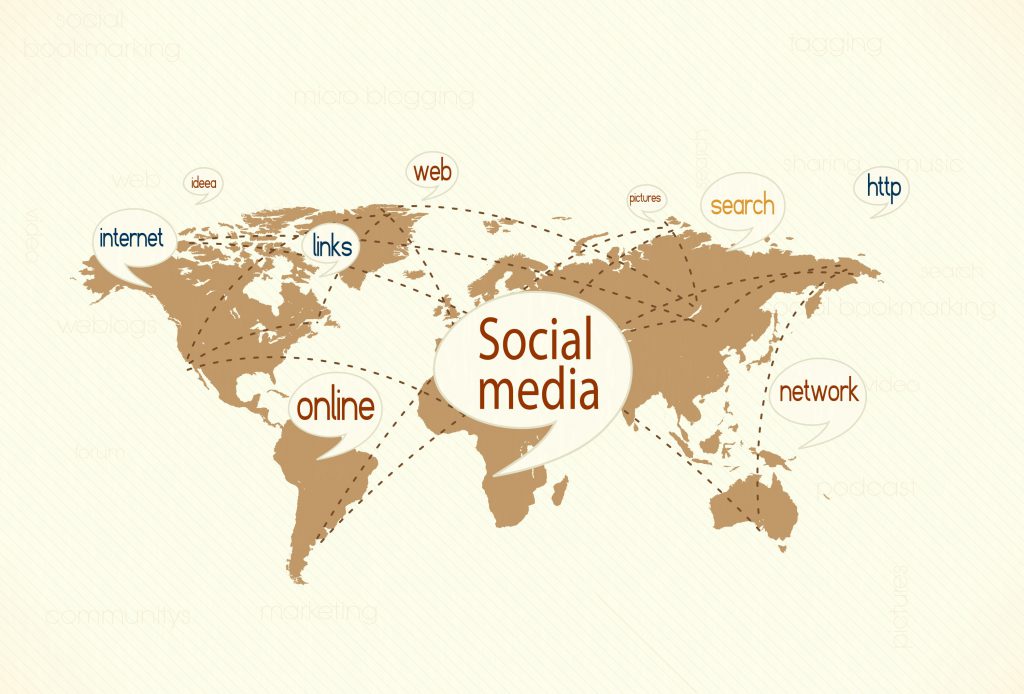Tag Archives: real estate
Tech Secrets from Rising Real Estate Stars

Online reviews aren’t just for restaurants; they are equally useful for real estate marketing. They also happen to be Kimberly Sethavanish’s secret weapon.
Sethavanish, a salesperson at Century 21 Alliance in Santa Rosa, Calif., has gained three listings from clients finding her positive reviews on Yelp. After each transaction, Sethavanish asks her clients to share their experience with her services and, for the most part, they are happy to help. And best of all, these highly persuasive online reviews are free.
“If you’re not putting yourself out there, you’re not able to be found. That’s worse than anything else,” says Sethavanish, a member of REALTOR® Magazine’s 2016 class of 30 Under 30.
For this year’s 30 young entrepreneurs, technology and online tools are a way of life in their business, keeping them connected to clients and organized at the office and helping to smooth out any bumps in the road to a successful transaction.
We asked a few of the 30 Under 30 honorees to share the tech tool that keeps them on track. Here’s what we found:
They’re Paperless
In addition to online reviews, Sethavanish is also a fan of DocuSign because it helps cut the response time in her hot seller’s market. “I’ve seen it make or break a sale,” she says. “With DocuSign, you can get your counteroffer in before someone else does.”
Several other 30 Under 30s also attest to the benefits of electronic signatures.
Shari Anhorn, CRS, GRI, team member and broker-owner at Brokers 12 Inc. in Minot, N.D., has been using DocuSign, a REALTOR Benefits® Program partner, since 2011, putting her among the first agents in Minot to use electronic signatures.
“This is rural North Dakota, and to be able to have a seller or buyer who is two hours away sign a document from afar is tremendous,” she says. What’s more, many of her clients are military personnel who have to purchase property sight unseen, and DocuSign has eased the process, Anhorn says.
But some 30 Under 30 members are careful not to assume every client knows how to use even the most basic technology.
The market that Diego Espinoza-Martinez, salesperson with Keller Williams Realty-Tulare in Visalia, Calif., serves is largely agricultural and heavily impoverished. While he uses DocuSign with some clients, it’s not always appropriate, he says. Instead, Espinoza-Martinez takes the time to learn his clients’ comfort level with technology and then decides on the appropriate tools for the transaction.
Another tool for going paperless is Genius Scan, available through both the App Store and Google Play. Wade Corbett, CRS, GRI, salesperson with Keller Williams Realty in Raleigh, N.C., is an avid user. “I scan a business card and import it into my database. That way, I don’t have to carry around a bunch of cards,” he says.
Genius Scan can be used to scan forms, receipts, or a multitude of other real estate documents from your smartphone. Save the images as PDFs and email them on the go. You can also export the files to your cloud service of choice, such as Dropbox or Google Drive.
Alexander Parker, also a 2016 30 Under 30 honoree, creates property folders in Dropbox for his clients, where they can share pictures, maps, and other relevant documents. Parker, salesperson with Lord & Stanley Realty in Tallahassee, Fla., is also rarely without his iPad so that he can access files anywhere and look them over with clients in the field.
In San Diego, Sarah Davis, SRES, broker owner of Davis Estates, takes her Surface Pro tablet to every client meeting. “I can take it to a showing and the buyers can sign a purchase order and send it to the listing agent while we’re still in the house,” she says. In California, agents are required to give a copy of the contract to the signer at the time it is signed, so she emails a copy to her clients directly from her tablet.
For software, she uses Microsoft OneDrive for Business, a secure cloud service, for all her transaction files. “It’s safer than email, and if my computer dies, everything is still in the cloud,” Davis says.

They Work Hard at Staying in Touch
Connie Chung, salesperson with Vanguard Properties in San Francisco, considers herself old-fashioned when it comes to staying in contact with her clients. She prefers dinners and coffee meetings over informal emails. “I can see their facial expressions, hear the tone of their voices, and have them hear mine,” she says.
And when a client needs more attention — when they’ve expressed unhappiness with a property or have an issue that needs to be resolved — Chung says that writing an email is the last thing you should do. “I find it simplifies my life if I pick up the phone, so I can really hear where they are coming from and ask if we can meet for coffee,” she says. “A lot of times, meeting face-to-face takes away any discomfort for both parties.”
On the social media front, she engages with clients and her sphere predominantly through Instagram. “Recently, I was touring a new development. It was great to wear a hard hat and neon vest and post behind-the-scenes photos that a lot of people don’t usually get to see,” she says.
Corbett describes his database as the core of his business, so he uses Brivity, a cloud-based CRM, to stay in touch. “It helps me follow up better and makes me able to utilize my time better,” he says.
Honoree Rebekah Eaton, associate broker with RealtySouth-MB-Crestline in Birmingham, Ala., is always looking for meaningful ways to stay connected to her sphere. So she recently started using BombBomb, a service that helps users produce video greetings that can be shared via email or text. “I take a little time to record a short video saying, ‘Thinking about you.’ And then I send it on. Bam.”
They Prefer to Market in a Meaningful Way
Scott Steadman, a Windermere Real Estate agent in Draper, Utah, uses his real estate blog to tell the story of his clients. “I talk about the family who spent years gathering around the fireplace for birthdays and holidays, and how that room was the place where they felt whole,” Steadman says. “Pairing posts like that with social media always gives my followers a reason to come back to my website for more info.”
Consistency is also key, Steadman says, so he rarely lets more than a few days separate his posts, which cover everything from market trends to before-and-after renovation photos.
Brittany Barsky-Allison, team member with Wydler Brothers in Bethesda, Md., focuses on promoting her business on Facebook in a “fun, organic way.” She creates an advertising campaign for every one of her listings, and she often posts pictures with clients or of homes she’s toured on her personal and business pages. She celebrates each closing with a status update and is frequently “liking” and commenting on her friends’ statuses and photos.
“This has helped me to pick up referrals and create a sense of expertise amongst my peers,” she says. “Brokerages must continue to place more emphasis on the people in the real estate industry and recognize that people buy homes, not computers, robots, or smartphones. Technology strengthens our industry, but people are at the core, and we cannot forget that simple fact.”
Barsky-Allison uses Salesforce.com to track her pipeline and communicate with her sphere of influence. She sends out weekly and monthly emails as well as monthly market updates, and acknowledges the buy or sell anniversaries of her clients by sending a note or gift.
Customer service is a top priority for honoree Jessica Bean, salesperson with Century 21 Price Right in Lewiston, Idaho. That’s why she arms herself with data from NAR’s Realtors Property Resource® before every marketing or listing presentation.
“It’s one of the most integral pieces of my business,” says Bean, who will compare RPR’s detailed reports against her own research on comps as well as the assessed value of a property. The reports also help her make the case that presale updates can make a listing much more attractive.
Bean also notes that RPR can help her craft a competitive offer in the seller’s market that currently defines much of her area. She uses it to help buyers put themselves in sellers’ shoes, explaining how she’d use the RPR data to price the home if she were the listing agent on the property. And finally, Bean loves the fact that she can pull RPR up on her phone on the go: “I literally use it every day in my business. Man, it’s a lifesaver for me.”
Credit to Erica Christoffer
Erica Christoffer is a consulting editor for REALTOR® Magazine.
Share & Win!!
Search,find,buy,Smile
Style a Master Bedroom as a Sleep Retreat
Adults spend more time in their bedroom than in any other room in their house. But you wouldn’t know it from the home sales process. Buyers and sellers alike often pay more attention to kitchens, master bathrooms, closets, and yards than they do to this vital space where they will usually spend more than a third of their 24 hours each day.
“Who spends that kind of time in the kitchen?” asks sleep expert Nancy H. Rothstein, founder of The Sleep Ambassador in Chicago, a source for education, consulting services, and resources that optimize healthy sleep.
Yet more attention is being paid to the importance of getting adequate sleep, from high-profile advocates like Arianna Huffington, who recently published her book, The Sleep Revolution: Transforming Your Life, One Night at a Time (Harmony, 2016), to medical professionals. “Fewer than six hours [a night] can lead to diseases — a higher rate of diabetes, obesity, cardiovascular problems, and even shorter life spans,” says Dr. Susheel Patil, clinical director of Johns Hopkins Sleep Medicine in Baltimore.
While there’s no magic figure for the amount of sleep one should get, Patil suggests adults try for seven to eight hours on average. Dr. Michael Breus, a board-certified sleep specialist in Los Angeles known as The Sleep Doctor, uses his household as an example of the variation. “I need between 6 1/2 and 7 hours while my wife needs between 8 and 8 1/2,” he says.
Buyers and sellers alike should strive to furnish a master bedroom that contributes to high-quality sleep. Updating or remodeling the room offers another benefit, says certified color consultant Michelle Mohlere, a salesperson with Gibson International in Los Angeles. A nicely designed bedroom is likely to bring in more money at resale than one without these touches, she says.
Sellers looking to better stage this room will also gain from the following six steps:
1. Stage the bed in a choice spot. Connecticut architect and author Duo Dickinson prefers the bed be set away from the room’s entrance to keep it out of the main circulation path. Kathryn Baker, vice president of design services with Polaris Pacific, a real estate sales and marketing firm in San Francisco, likes to place a bed in a spot so occupants can enjoy the best view — whether that’s inside (maybe toward a fireplace or favorite piece of art) or outdoor (with views of trees or water where possible). Chicago designer Michael Del Piero suggests pairing a bed with an upholstered headboard for those who like to sit up in bed and read; she dresses up the bed with decorative pillows, a duvet, and a throw to personalize it and make it more welcoming to tuck in for sleep.
2. Install the right window treatments. Minimal is the design mantra when it comes to much of the standard room décor today. But while no coverings in some rooms, such as kitchens and living rooms, allows in more light and views, some amount of treatment in a bedroom is needed to block outside light and provide privacy. Del Piero likes to use a blackout shade behind a transparent shade or drapes or a woven wood shade with blackout drapes. Baker favors motorized shades to make opening and closing a task that can be performed from the bed or set by a timer.
3. Use the right lighting. Dickinson discourages installing recessed cans since they chop up a ceiling and aren’t attractive to look at while in bed. He prefers task lighting from lamps on night tables or wall-mounted sconces. Michigan designer Francesca Owings likes hanging one decorative fixture in a ceiling’s center for an aesthetic punch. Sensitive sleepers might appreciate the new Good Night Biological LED bulbs that claim to help regulate a body’s natural circadian rhythm through the production of the hormone melatonin, which helps control sleep and wake patterns, says Breus.
4. Conceal or banish electronics. For years, scientists and health professionals have known about the danger of the blue light that comes from certain electronics equipment and adversely affects melatonin production, says Patil. But only recently have they suggested that you can enhance unwinding and falling asleep by turning off TVs, smartphones, and iPads at least an hour before bedtime. Shutting them off also helps train the brain that the bedroom is primarily a place to sleep rather than stay awake, Patil says. If the temptation is too great, home owners might consider making the master bedroom a no-electronics zone. Baker’s company furnishes model bedrooms in its residential projects without TVs and other electronics technology to demonstrate this idea. “People have responded favorably, and some put TVs in a second bedroom or home office” instead, she says.
5. Pick a soothing palette. Of course, color is a personal preference, but color experts can offer guidelines. “You can’t say one is soothing for all and will make a person feel calm,” says Jessica Boyer, a Chicago designer with Susan Fredman Design Group. Sue Wadden, director of color marketing for paint manufacturer Sherwin-Williams, says colors that aren’t extreme are more restful. “They’re neither too bold, dark, bright, or intense. Rather, soft and calming,” she says. Designer Kimba Hills of Rumba Style in Los Angeles prefers a palette of pale blues, greens, beiges, grays, and whites for the bedroom. Boyer also likes to bring in bedding in white and light creams because she finds they’re calming. “It’s the equivalent of sleeping in a cloud with nothing to distract me. What’s important isn’t what’s trendy but nurturing,” she says.
6. Add creature comforts. If the room’s size allows, consider adding a chaise, chair and ottoman, and night tables. Also, a large area rug or wall-to-wall carpeting can help deaden noise and provide warmth underfoot, says Owings. If the room is located so it opens directly to the outdoors, play this up. Mohlere says real access to bucolic scenery can contribute to a sense of tranquility even more than just viewing the outdoors can. If outdoor access isn’t possible, check to see that windows are operable for fresh air. Other amenities worth considering: a gas- or log-burning fireplace for coziness, artwork for eye candy, and good storage for tidiness. “Too much clutter is distracting,” Rothstein says.
At the end of the day — or the beginning of a new one — real estate pros can emphasize the master bedroom as one more “fabulous room where you spend time in your new home,” Rothstein says.
Barbara Ballinger is a freelance writer and the author of several books on real estate, architecture, and remodeling
Welcome to the Real Estate of California !
New Star Realty & Inv.
Real Estate
SELL for More,Buy for Less
5 Ways to Green Up Your Business

Go green and you’ll see more green. Taking measures to make your brokerage more resource conscious and sustainable will result in positive results for your body, your company, and your community. Check out these simple actions we took at my brokerage, TrailRidge Realty in Boulder, Colo., and you’ll see how easy it can be to start implementing a green plan at your office today.
1. Go Digital
What to limit paper waste? There are so many digital platforms available today for document storage that keeping paper files in the office seems like the work of ancient times. Most systems include backup, encryption, and two-step verification for security. Our office uses Google Apps for Work, which provides built-in security to keep out unwanted hackers. We are also subscribe to Google Vault, which automatically backs up all the files my brokerage has stored in Google Drive as well as all company e-mails for up to 10 years. Not only does that protect us against hackers and computer or server malfunctions, but if we accidently delete something important, we can pull it from “the Vault.” Everything is saved in the cloud for longer than we would ever need, and it only costs each user in our office $10 per month. It’s a great service to offer your agents, a huge time saver, and it keeps the cost of paper and printing to a minimum. We no longer have the need for a mega printer that requires a costly maintenance plan.
2. Be Smarter About Property Brochures
While we’re cutting down on paper, let’s examine why we think buyers and sellers want it so much. Agents typically place brochures inside sellers’ homes and on for-sale signs outside. These documents are always the last thing to be replenished, and if there is a price reduction, it can be the devil’s work to remember to make updates – and that leaves the seller feeling their listing is being neglected. The simple solution is to ditch the stack of brochures in favor of just one piece that displays the property website and an invitation to text or e-mail for more information. We usually place a laminated brochure on the for-sale sign in front of the property, and another inside for showings and open houses. We use TrustyText and create a distinct text code for inside the house and a different code outside. That way we can guess if the person requesting information has an agent (inside the house) or is a passerby outside reading the sign who may need an agent. This method helps make sure buyers get the most up-to-date information, sellers aren’t sitting around waiting for replacement brochures, and our company is able to respond accordingly to potential client requests.
3. Turn Off Your Computer
Optimize those computer settings. No machine needs to be left on while you or your agents run out to show a house or see a client. But that doesn’t mean you’ll remember to turn it off before you leave. Check the energy-saving settings to make sure your computer turns fully off after a certain amount of time without use. When printers and computers are on standby they continue to draw power. Consider using a power strip for all devices, including the computer, cell phone charger, speakers, etc. That way you can switch off the power strip without unplugging everything, ensuring that no extra power is being consumed while you are away.
4. Don’t Let Single-Use Coffee Pods Take Over the World
It’s been reported that almost one in three American homes now has a pod-based coffee maker. Imagine how that statistic might increase if we add in all the real estate offices that use these single-cup machines. Reports say that more than 3 million disposable coffee pods are used daily. Let’s just imagine what that does to landfills. And most people don’t think about where those plastic pods are made. A quick Google search showed me that the coffee might be placed inside the receptacle here in America, but the plastic mold is likely made overseas. That’s a lot of traveling and even more energy wasted so that we can make one single cup of coffee. Leading the way, Hamburg, Germany has banned single-use coffee pods from government buildings. Let’s follow their example in our real estate businesses and homes. Please, brew drip coffee in your offices and encourage your agents to bring in reusable mugs. Better yet, give them all company-branded travel mugs so they can take their coffee (and your logo) into the field.
5. Can You Walk To Work?
Even though environmentalists suggest that working from home is the greenest alternative to a commute, I know this isn’t possible for many real estate professionals. While it works for some, I can say that my level of success doesn’t happen working at home. I operate an office in the heart of our community and neighborhood – I also chose a location for TrailRidge Realty that’s close enough to home so that I can walk to the office. At first I thought it might disrupt my day if a client called and needed to see a house while I was walking to or from the office. However, I find that it takes about 20 minutes total to walk home and get my car if needed, which is easily factored into my commute. I’m reducing my carbon footprint, spending less on gas, and burning more calories all at once.
Leanne Goff is the broker-owner of TrailRidge Realtyin Boulder, Colo. She was named Distinguished REALTOR® in 2015 and given the President’s Award in 2013 by the Boulder Area REALTOR® Association. Leanne also completed her master’s degree in real estate through REALTOR® University in 2016.
FIND YOUR DREAM HOME!
How an Architect Can Save Your Listing
You likely have forged relationships with real estate lawyers, bankers, and appraisers, among other professionals, calling on their expertise when you and your client need help navigating an aspect of the transaction. Have you considered when you might need an architect’s point of view?
Recently, a real estate agent called me about a house she had listed that had a “unique” floor plan. The first floor was awkwardly designed, and there was no place that leant itself to an intuitive seating arrangement to simply relax and watch television. As soon as buyers walked in, they turned right back around and walked out. The agent told me that none of her buyers could envision living in the house.
Here’s where my perspective came in handy. As an architect, I’m an “idea guy,” and where people see problems with a home’s layout, I see opportunities. Like most architects, I have a vivid imagination and the ability to think and visualize in three dimensions. So when agents need a fresh set of imaginative eyes to look at a property, I’m the guy they often call.
So this agent wanted some ideas about how the house could be adapted to become more appealing to buyers. We spent an hour doing a walkthrough together, and I was able to visualize a simple renovation plan that she could present to her clients. I advised taking down a wall, moving a door to an adjacent room, and creating a proper entry foyer. The job would be far less extensive than she expected, and now armed with ideas, she was able to present the house in a new light. She had something to be excited about, and she could convey that excitement to her clients.
Focus on the Positive With Older Properties
Home inspections are designed to show buyers all the flaws in a home so they can make an educated decision about whether they want to purchase. Even if they like the location of a home, the home inspection report can take the wind out of their sails if it needs a lot of work. Soliciting the advice of an architect at this moment could help buyers keep their vision alive and refocus them on the positive aspects of the house.
I don’t tell them about rotted window trim or leaky gutters; I tell them about how they can open up the kitchen, let more light into the great room, add more garage space, add on a first floor master suite, or create outdoor living spaces, all while reassuring them about the structural integrity of the house. I advise on the feasibility of remodeling and the opportunities that lay hidden within a home. That feedback can help a buyer see the pros more than the cons and keep the transaction on track.
Build the Vision for New Construction
If you sell building lots or raw land, you know how important visualization can be. I’ve walked building sites with agents and their clients, and I ask the buyer what they would like their new house to be. Will it be private or will it make a statement? Will it need a walk-out basement? How large will it be?
Then we discuss the opportunities for each property. We talk about where the sun rises and sets. Which way will they approach the house? Where would the garage and driveway be? Is the lot too steep or does it have a drainage problem? Where are the view opportunities? Through this discussion, we end up determining which lot suits their goals for their new house best. The buyers can now more easily make a choice and buy a property with confidence.
Architects help practitioners and their buyers unravel the uncertainty that can block them from submitting an offer on a property. We don’t sell anything; we remove doubts and open doors to new opportunities. If you’re wondering whether architects “give away” free advice like I do, I can say that the smart ones will. For a few hours of their time, the architect can be introduced to potential clients who may be building or remodeling a house and need their services. Beyond that, the architect and agent get to know more about how they both work and relate to clients. If that goes well, it leads to valuable networking and mutual referrals.
If you don’t already know an architect, contact builders in your area for referrals or contact your local chapter of the American Institute of Architects. The AIA will have a membership directory that often describes each architect’s specialty. When you make friends with an architect, you will broaden your vision for properties while helping your clients be more confident in their decisions.
William Hirsch, author of Designing Your Perfect House, is a member of the American Institute of Architects. He’s the former president of the Delaware Society of Architects and a member of the National Council of Architectural Registration Boards.








